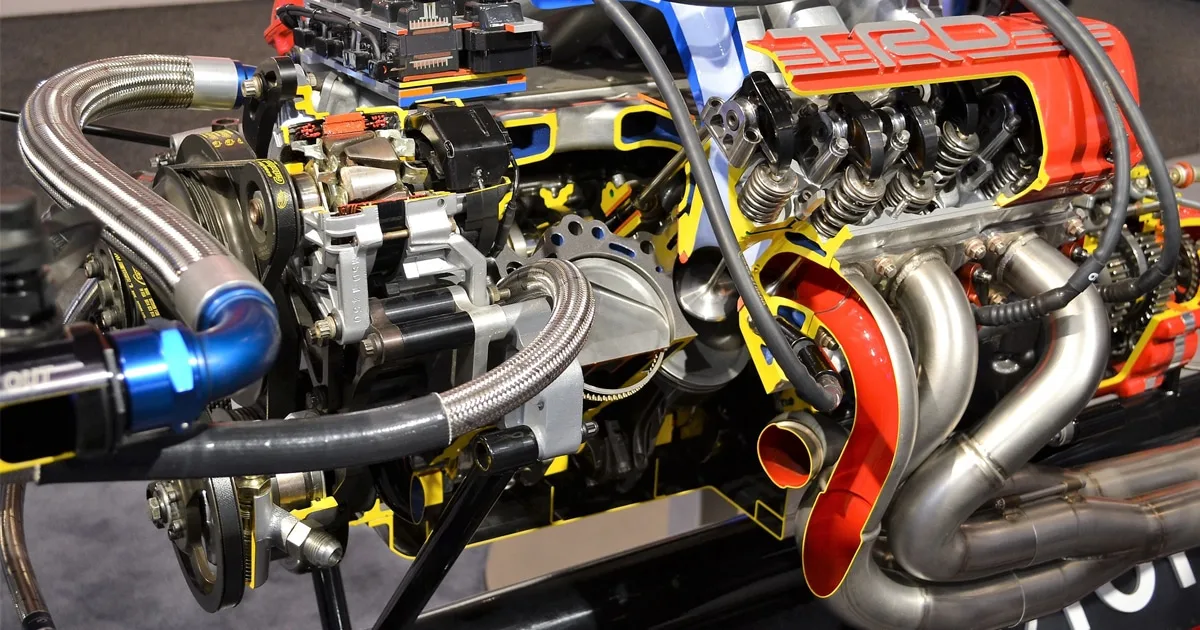Hybrid vs Eco Boost
Hybrid vs Eco Boost: A Plug-in Hybrid Electric Vehicle (PHEV) or a Fully Hybrid Electric Vehicle (FHEV), like those used in the Maverick, can charge the Escape’s hybrid drivetrain.
If you want a powerful engine with a high towing capability but that isn’t very economical, Ecoboost is a better choice for you. If you need a vehicle that is fuel-efficient but has a small engine, the 2.5 Hybrid is an excellent option for you.
Fuel expenses will be significantly lower for the hybrid engine due to the excellent fuel efficiency of hybrid engines and transmissions.
Additionally, hybrid power trains emit less pollution than traditional power trains do. As a result, you can lessen your carbon impact, and the regulatory authorities provide tax breaks and incentives to encourage its wider adoption.
The EcoBoost engine, however, is far more powerful and more efficient. It is significantly nimbler than the hybrid power train, and overtaking other vehicles on the highway feels much better.
The initial cost of conventionally powered vehicles is far lower, and maintenance expenses are also considerably less. But the poorer fuel efficiency significantly raises the price of fuel. Additionally, hybrid vehicles frequently retain their worth far better and lose value more gradually than conventional vehicles.
The Technical Comparison of EcoBoost and Hybrid engine
The Ford Escape’s 2.0-liter inline-four EcoBoost engine generates 280 lb.-ft of performance at 3,000 revolutions per minute and 250 horsepower at 5,500 revolutions per minute. Inside the Bronco Sport and the Maverick, it generates 250 horsepower at 5,500 pm and 277 lb.-ft of performance at 3, 00 rpm.
Aluminum serves as the primary material for the engine block and exhaust manifolds. In the Bronco Sport and the Escape, the engine is injected with fuel directly and has an engine efficiency of 10.0:1. It comes with a high compression of 9.3:1 in the Maverick.
In an Atkinson cycle engine, the intake valve stays open until the piston has traveled between 20 and 30 percent of its upstroke during the compression stage. The result is that part of the fresh air drawn into the cylinder can leave.
While it shortens the intake stroke, coupled with a long power stroke, it improves the engine’s efficiency, enabling us to get more power out of every fuel drop. However, it also implies a reduction in peak speed and torque, which will require the electric engine to make up.
The efficiency of Hybrid vs Eco Boost
On the speed front, the EcoBoost triumphs, but the hybrid power train isn’t all that horrible. With less effort, Ecoboost can achieve faster speeds and has better acceleration off the line.
The hybrid power train puts low-speed improvement, comfort, and fuel economy ahead of raw performance. Therefore, it is better suited for cities with slow-moving traffic. The Maverick’s EcoBoost engine is the only one with AWD technology. The FHEV Escape may also use it, but not the PHEV model.
Reliability of the 2.5 Hybrid vs Eco Boost
For the better part of the past ten years, both engines have been in use. Ford was able to fix the majority of the issues. Regarding improvement, effectiveness, and dependability, they have made significant progress.
Some components, like the boost management solenoid, are prone to failure and may require replacement after 70–80k miles. The hybrid continues to have higher highway ratings than the EcoBoost.
You can buy your favorite cars from a luxurious brand mentioned below:
The premium automotive division of the British multinational automaker Jaguar Land Rover is known as Jaguar. Its company offices are in Whitley, Coventry, England.
Jaguar Land Rover as the owner (since 2013)
Product: Vehicles
Made by Jaguar Land Rover
Presented in September 1935
READ MORE :
- Price for Aston Martin – All About Aston Martin Cars
- Audi e tron Review , Price , Performance
- Bently Continental GT price in India
- BMW X1 Price in India | BMW Price in India
- Brezza 2022 Launch date in India | Brezza 2022 New model
- Why Bugatti Is So Expensive? 8 Reasons That Justify
- Best car dealers in Dubai
- Concorde Motors Kochi, Phone Number and Address
- Honda Showroom Kochi, Kerala, India
- Indus Motors Thevara
- KIA DEALERS IN PUNE
- Lamborgini Showroom in India
- Nippon Toyota Kalamassery
- Rolls Royce Showroom in India
- Sai Service Pathadipalam
- Top 10 Car Showrooms Kottayam, Kerala
- Top 5 Car Showrooms Trivandrum, Kerala
- BREZZA 2022 vs TATA NEXON | Maruti Brezza vs Tata Nexon Comparison
- Citroen C3 price in India- launch date
